How reliable is the water supply in Chapala and Ajijic, Mexico? Are there water disruptions?
Santiago Hernandez - Chapala Med
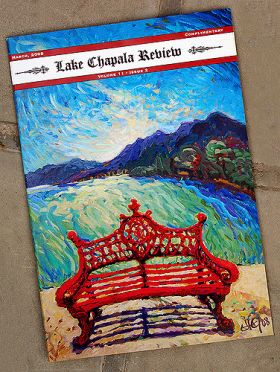 The water supply in Chapala and Ajijic is pretty reliable. In my experience, water disruptions only happen only once or twice a year for only a couple of hours. We are connected to the municipal water and it is very reliable.
The water supply in Chapala and Ajijic is pretty reliable. In my experience, water disruptions only happen only once or twice a year for only a couple of hours. We are connected to the municipal water and it is very reliable. (Cover of Lake Chapala Review magazine, picutred.)
 The water supply in Chapala and Ajijic is pretty reliable. In my experience, water disruptions only happen only once or twice a year for only a couple of hours. We are connected to the municipal water and it is very reliable.
The water supply in Chapala and Ajijic is pretty reliable. In my experience, water disruptions only happen only once or twice a year for only a couple of hours. We are connected to the municipal water and it is very reliable. (Cover of Lake Chapala Review magazine, picutred.)
Posted February 4, 2016
Mirna Segura - Ajijic Rentals
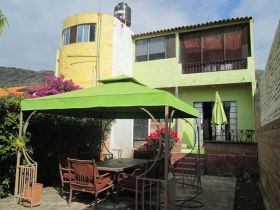 Water is very reliable in Chapala and Ajijic. I live in Ajijic and we have water all day. We have tinacos (water storage tanks) on the roofs of our houses so in case there would be a problem with the water supply from the city, then we would have water from the tinacos.
Water is very reliable in Chapala and Ajijic. I live in Ajijic and we have water all day. We have tinacos (water storage tanks) on the roofs of our houses so in case there would be a problem with the water supply from the city, then we would have water from the tinacos. During the rainy season, thunderstorms sometimes damage the municipal water pumps, which would cause water interruptions. However, when something like that happens, the people here in...
 Water is very reliable in Chapala and Ajijic. I live in Ajijic and we have water all day. We have tinacos (water storage tanks) on the roofs of our houses so in case there would be a problem with the water supply from the city, then we would have water from the tinacos.
Water is very reliable in Chapala and Ajijic. I live in Ajijic and we have water all day. We have tinacos (water storage tanks) on the roofs of our houses so in case there would be a problem with the water supply from the city, then we would have water from the tinacos. During the rainy season, thunderstorms sometimes damage the municipal water pumps, which would cause water interruptions. However, when something like that happens, the people here in Ajijic really make it a point to get everything fixed quickly so that it doesn’t cause a lot of trouble to the people who live here. I have lived in Ajijic for 5 years now and I have never had a problem with water ever. I have never had to use the tinaco in our house.
When we lived in Chapala, I had some issues with the water supply but later on we found out that the problem is not on the municipal water supply but the connection to my house. The pipe that comes into my house has a blockage and because of that we were not getting enough water to my house. We have bigger tinacos in Chapala because Chapala is bigger than Ajijic and the wells are farther from the houses so the water pressure is not as strong. However, after they fixed the blockage on our water pipes, we never had any problem with water supply anymore here in Chapala.
(Tinaco on roof of house, Chapala, Mexico, pictured.)
Posted September 5, 2016
Percy Garcia
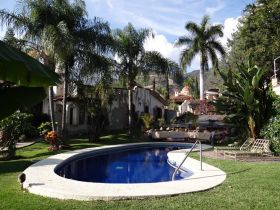 A water company supplies the water in Chapala and Ajijic and they bill you based on your usage per month. It is very reliable because before you get to start a construction in Chapala and Ajijic, you have to get a permit from the water company. The water company is also under the government. When you start your construction, whether it is a house or a condominium, you have to apply for a permit from government and see if they have the capabilities to provide water for your location....
A water company supplies the water in Chapala and Ajijic and they bill you based on your usage per month. It is very reliable because before you get to start a construction in Chapala and Ajijic, you have to get a permit from the water company. The water company is also under the government. When you start your construction, whether it is a house or a condominium, you have to apply for a permit from government and see if they have the capabilities to provide water for your location.... A water company supplies the water in Chapala and Ajijic and they bill you based on your usage per month. It is very reliable because before you get to start a construction in Chapala and Ajijic, you have to get a permit from the water company. The water company is also under the government. When you start your construction, whether it is a house or a condominium, you have to apply for a permit from government and see if they have the capabilities to provide water for your location. Once they confirm and give you the permit, you have to pay a certain amount.
A water company supplies the water in Chapala and Ajijic and they bill you based on your usage per month. It is very reliable because before you get to start a construction in Chapala and Ajijic, you have to get a permit from the water company. The water company is also under the government. When you start your construction, whether it is a house or a condominium, you have to apply for a permit from government and see if they have the capabilities to provide water for your location. Once they confirm and give you the permit, you have to pay a certain amount. There may be water supply disruptions once a month due to maintenance of the pipes. When they clean the pipes, you might not have water for half a day or even for a whole day but what most people do is to store water a day before the scheduled maintenance so they have water for the whole day that the water is out. People usually construct water storage in their houses and the amount of water that the storage could hold is usually enough for several days without water supply from the water company.
In general, the municipal water is good. The pressure is good so you don’t need a pump or anything like that. However since the condominiums here are tall buildings, they usually have water storage to keep the water supply uninterrupted but if you have a regular house here, you could go without a water storage and you won’t have a problem.
(Condo and common pool in Lake Chapala, Mexico, pictured.)
Posted September 6, 2016
Karen Herrtwich - S&S Auto
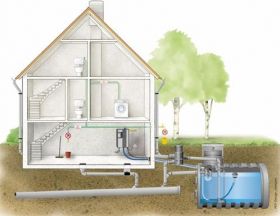 Chapala and Ajijic get their water supply from wells. They distribute the water via SIMAPA (Administration of the State and the Economic and Social Policy of the Community), which is a government entity. There can be problems with wells sometimes, such as pipes breaking, which is an inconvenience. Generally, there are no problems, but when a well needs repairs, it can be days for a week or two, depending on what the problem is.
Chapala and Ajijic get their water supply from wells. They distribute the water via SIMAPA (Administration of the State and the Economic and Social Policy of the Community), which is a government entity. There can be problems with wells sometimes, such as pipes breaking, which is an inconvenience. Generally, there are no problems, but when a well needs repairs, it can be days for a week or two, depending on what the problem is. Most...
 Chapala and Ajijic get their water supply from wells. They distribute the water via SIMAPA (Administration of the State and the Economic and Social Policy of the Community), which is a government entity. There can be problems with wells sometimes, such as pipes breaking, which is an inconvenience. Generally, there are no problems, but when a well needs repairs, it can be days for a week or two, depending on what the problem is.
Chapala and Ajijic get their water supply from wells. They distribute the water via SIMAPA (Administration of the State and the Economic and Social Policy of the Community), which is a government entity. There can be problems with wells sometimes, such as pipes breaking, which is an inconvenience. Generally, there are no problems, but when a well needs repairs, it can be days for a week or two, depending on what the problem is. Most fraccionamientos (residential subdivision) like La Floresta will have their own well that supplies their residents with water.
Water that comes out of the well is potable, but then the water sits in what we call an aljibi, which is an underground water tank, that’s where the water can get contaminated. You either have to have it filtered, or you can buy bottled water.
I have a reverse osmosis system under my sink in my kitchen so I can drink my water. We also have a system at home to filter the water as well so it's very clean, and we use a pressure system. Some people in Mexico use gravity wherein the water is pumped up to a rooftop tank (tinaco), but the tinaco is also where the water can also get contaminated – with the water sitting in the hot sun, or bugs can get in, etc.
When there’s a problem with water supply, you can call “pipas,” which are basically water trucks that have big water tanks. They will come and fill up your cistern with water. Pipas charges about 700 pesos - 800 pesos (US $34 – US $39) to fill up your tank.
If your residence is in town in Chapala and Ajijic, the city will supply you with water. The water supply gets turned on every day or every other day for a certain amount of hours, to supply your tinaco or aljibe.
We have a big tank at home that contains enough water to last us a week, which we clean every few years. I'm very careful with water because we're in a country where water is very important. I don't wait for the water in my sink to get hot to start washing the dishes. I start washing with cold water, which I do because I have a tremendous amount of respect for water.
Lake Chapala is the largest fresh water lake in all of Mexico, but although it's a large lake, it's not nearly like the lakes that I'm used to back home in Canada. You can get a dry spell after couple of years of not much rain, which can affect the lake level. When I see people washing their terrace with a hose when they could be sweeping it… it drives me nuts because we need to respect water. On the other hand, I've never had a problem with water here in Chapala. I've never been without water. But we don't really know, in the years to come, and as more people come to Chapala and with Guadalajara using the lake for their water, this could be an issue in the future. That’s probably a negative thing to say, but even back home in Canada, I don't like to see water being wasted. I think water is a commodity that we all have to respect a little bit.
The charges for water consumption in Chapala and Ajijic if you’re on city water depends on the size of your property. An average home would probably cost around 3,000 – 4,000 pesos (US $145 – US $195) a year for water supply. If your property is bigger, you can be charged more than that.
(Diagram of water delivered from an underground cistern or aljibe, pictured.)
Posted February 23, 2017
Roberto Millan - Roberto Millan Design and Construction
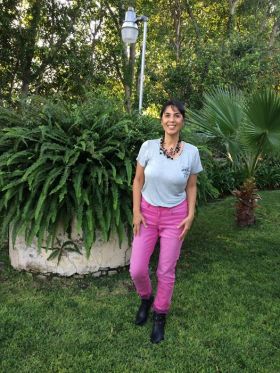 There are some "fraccionamientos" (small housing developments) in the Chapala and Ajijic area with problems with water supply, especially the gated communities. Gated communities have their own water wells, but they ration the supply so residents receive water every other day or supply stops when they have to repair the pump and equipment.
There are some "fraccionamientos" (small housing developments) in the Chapala and Ajijic area with problems with water supply, especially the gated communities. Gated communities have their own water wells, but they ration the supply so residents receive water every other day or supply stops when they have to repair the pump and equipment. However, in the village of Ajijic, there is no shortage of water. The lake supplies water to the...
 There are some "fraccionamientos" (small housing developments) in the Chapala and Ajijic area with problems with water supply, especially the gated communities. Gated communities have their own water wells, but they ration the supply so residents receive water every other day or supply stops when they have to repair the pump and equipment.
There are some "fraccionamientos" (small housing developments) in the Chapala and Ajijic area with problems with water supply, especially the gated communities. Gated communities have their own water wells, but they ration the supply so residents receive water every other day or supply stops when they have to repair the pump and equipment. However, in the village of Ajijic, there is no shortage of water. The lake supplies water to the village as well as some pumps, wells, and three-meter deep "pozos" (“pits” in Spanish), which are in different locations, for example, in La Floresta, which is adjacent to Ajijic.
Some houses would have a "tinaco" (water tank) for back-up in case of emergencies. Normally, the water supply in a house is controlled by a pressure system. There is a cistern with a quiet submersible pump, but if a household does not receive water for three days, this cistern will become empty. With a tinaco, you could have back-up water supply of up to 1,200 liters (over 300 gallons). The tinaco is located on the roof because it works by gravity pressure.
The pressure tank normally is in the equipment room in the garage. The pressure tank maintains consistent pressure in all the pipes in the house, which is measured in PSI (pounds per square inch); with a minimum setting of 40 PSI and maximum setting of 55 PSI. The whole system keeps pressure within this range. The pump in the house pushes water from the cistern through the pressure system, and water is then sent to the water lines.
Other people, instead of having a tinaco, would pay for a water truck to deliver water when the cistern runs out of supply.
(Jet Metier of Best Places in the World to Retire standing in front of what was previously well and now a planter, Ajijic, Mexico, pictured.)
Posted May 11, 2017
Chuck Bolotin - Best Mexico Movers
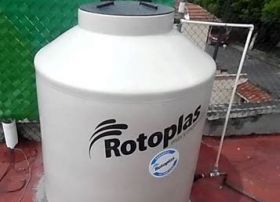 Quite a bit of the water in the Lake Chapala / Ajijic area comes from dedicated wells that service a particular local fraccionamiento (residential development). The development will have a well and a large aljibe, which is a water cistern where the water is held for distribution. Then, on some schedule (perhaps three times per week), the water is delivered from the fraccionamiento’s aljibe to each individual residences’ aljibe.
Quite a bit of the water in the Lake Chapala / Ajijic area comes from dedicated wells that service a particular local fraccionamiento (residential development). The development will have a well and a large aljibe, which is a water cistern where the water is held for distribution. Then, on some schedule (perhaps three times per week), the water is delivered from the fraccionamiento’s aljibe to each individual residences’ aljibe.For most residences,...
 Quite a bit of the water in the Lake Chapala / Ajijic area comes from dedicated wells that service a particular local fraccionamiento (residential development). The development will have a well and a large aljibe, which is a water cistern where the water is held for distribution. Then, on some schedule (perhaps three times per week), the water is delivered from the fraccionamiento’s aljibe to each individual residences’ aljibe.
Quite a bit of the water in the Lake Chapala / Ajijic area comes from dedicated wells that service a particular local fraccionamiento (residential development). The development will have a well and a large aljibe, which is a water cistern where the water is held for distribution. Then, on some schedule (perhaps three times per week), the water is delivered from the fraccionamiento’s aljibe to each individual residences’ aljibe.For most residences, their aljibe is connected to a tinaco (pictured), which is a smaller water cistern, usually on their roof, so if the power goes out and therefore the electric pumps don’t work, at least the home can receive the water from the tinaco on their roof.
It is very rare for there to be any water disruption from the fraccionamiento, but it is not that rare during the dry season if you use a lot of water and you have a small aljibe, to run low on water. If that happens, you can just wait until the next time the fraccionamiento delivers water to your aljibe, or if you’re frantic, you can call for a water truck, which will bring water to your aljibe for a very reasonable price.
Moving to Mexico? Check out Best Mexico Movers.
Posted August 7, 2018



.png)